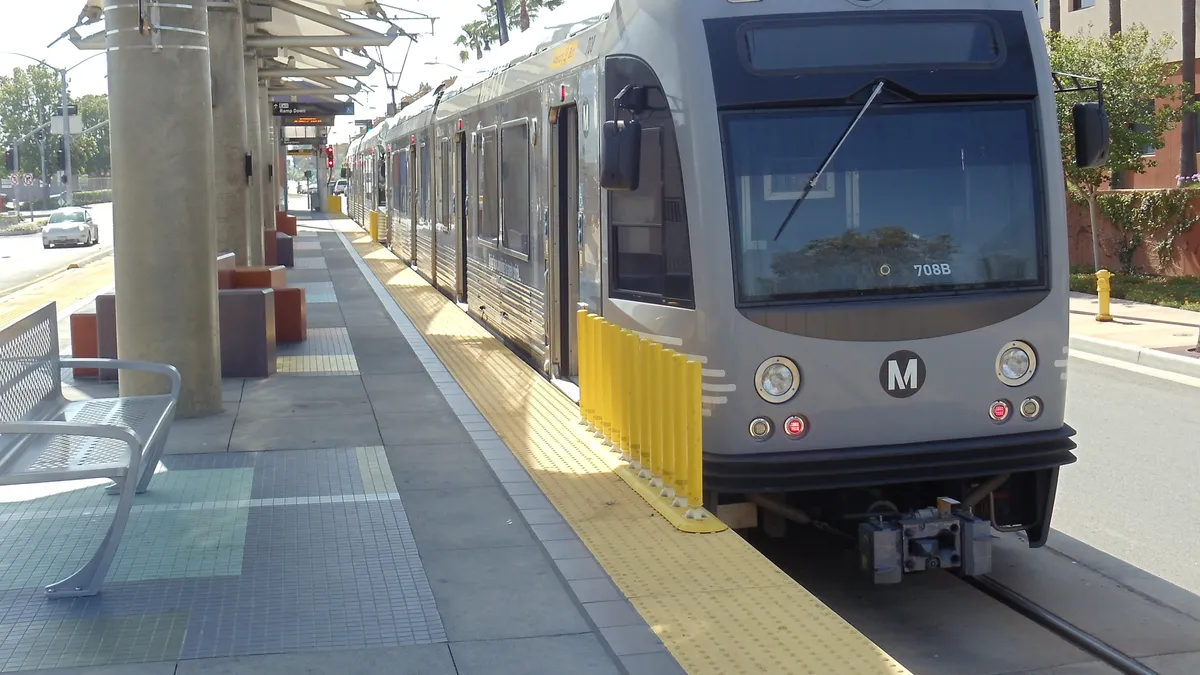Dive Brief:
- The Los Angeles County Metropolitan Transportation Authority (Metro) has hired Cubic Transportation Systems to develop an app that would allow transit users to pay for trips by scanning their smartphones. It would complement the existing plastic Transit Access Pass (TAP) cards that users tap at entry points each time they ride Metro.
- Customers will be able to use the app with all of the 24 L.A. metropolitan area transit authorities that already use the TAP card.
- System testing should begin this summer and the full system should launch by fall, according to Curbed Los Angeles.
Dive Insight:
Transit agencies in the largest U.S. cities have incorporated plastic tap-to-pay fare cards for a while, but in the past few years several have begun transitioning to completely paperless and/or touchless systems that use plastic cards and/or cell phones.
Washington, D.C.'s Metro introduced the plastic SmarTrip card in 1999. It stopped selling paper fare cards in 2015 and stopped accepting them in 2016. The plastic SmarTrip card — which, like L.A.'s TAP card, is tapped at entry gates — is now the only option for both locals and tourists. This week, San Francisco's Bay Area Rapid Transit system implemented a 50-cent surcharge on each paper fare card in an effort to get customers to switch to the plastic, touchless Clipper card. New York has been using the thin, plastic, bendable MetroCards since 1993, but the cards have to be swiped at turnstiles like a credit card instead of simply tapped. The city's transit authority announced in the fall that it will soon upgrade to a high-tech fare payment system that will let users through with the wave of a card or cell phone, and MetroCard will be phased out by 2023. Just as with L.A.'s system, Cubic had a hand in developing transit fare payment solutions for all of those cities, and others.
Los Angeles has taken on a number of projects recently to modernize its transit system. In the fall it put out a request for proposals (RFP) for a partner who would develop a microtransit system to complement the existing Metro system. It also partnered with Via to improve first mile/last mile connections by targeting rides to and from major transit stops.
The transit modernizations are viewed as a potential lifeline for the system, which regularly experiences ridership declines. Upgrades such as apps and on-demand transit options put customers' convenience at the forefront of the system. In a city known for horrible traffic congestion and smog due to residents' car dependence, every program that makes it easier and more convenient for customers to ride transit is a step toward increasing environmental friendliness.












